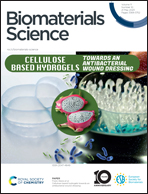Sunlight harvesting for heat generation inside water using biosynthesized magnetite nanoparticles
Abstract
A low-cost, simple, inexpensive, and environmentally friendly method has been employed for synthesizing magnetite nanoparticles (Fe3O4 NPs). In this study, weeping willow (Salix babylonica L.) aqueous leaf extract has been utilized as a reducing, capping, and stabilizing agent. The synthesized Fe3O4 NPs were characterized by ultraviolet-visible (UV-Vis) spectroscopy, FT-IR spectroscopy, scanning electron microscopy (SEM), energy-dispersive X-ray spectroscopy (EDX), X-ray diffraction (XRD), dynamic light scattering (DLS), zeta potential analysis, differential scanning calorimetry (DSC), and thermogravimetric analysis (TGA). The localized surface plasmon resonance (LSPR) performance of the Fe3O4 NPs was examined. It has been shown that the biosynthesized Fe3O4 NPs once dispersed in water can raise the temperature of water significantly when they absorb solar radiation through surface plasmon resonance (SPR). The impact of the pH value on the Fe3O4 NPs was also investigated. It has been shown that the optimum pH value among the examined pH values was pH 6. At this pH, the biosynthesized Fe3O4 NPs were able to increase the temperature of water from 25 °C to ∼36 °C. This dramatic increase in temperature was owing to the Fe3O4 NPs synthesized at pH 6 which acquired high crystallinity, monodispersity, high purity, minimum agglomeration, a small particle size, and high stability. In addition, the mechanism of converting solar energy to thermal energy has been discussed intensively. To the best of our knowledge, this study is unique and the novelty of this investigation is that Fe3O4 NPs acquire plasmonic-like properties under solar radiation. Also, they are anticipated to be an innovative photothermal adaptation material for solar-based water heating and heat absorption.



 Please wait while we load your content...
Please wait while we load your content...